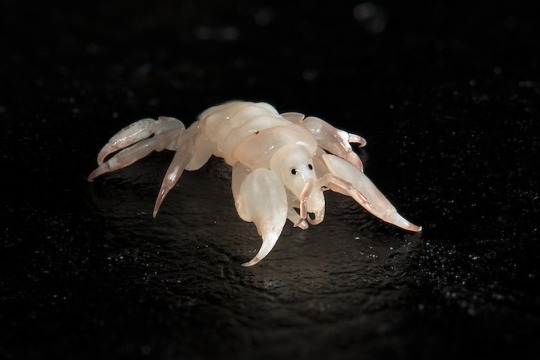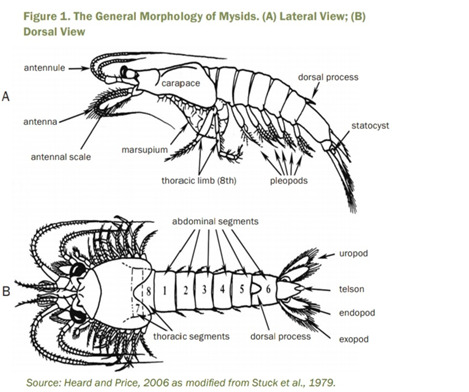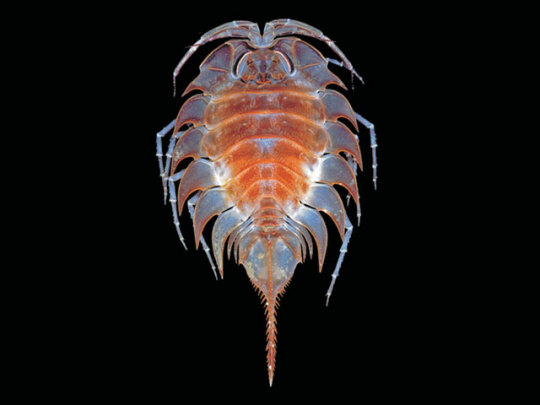#peracarida
Photo


Simple little isopod friend
Cubaris nigroflava
19/07/22
#Cubaris nigroflava#Black-and-yellow Spheric Pill Woodlouse#Cubaris#Reclined Pill Woodlice#Armadillidae#Tropical Pill Woodlice#Crinocheta#Holoverticata#woodlice#woodlouse#Oniscidea#Isopoda#isopods#Peracarida#Eumalacostraca#Malacostraca#Multicrustacea#Typical Crustaceans#Crustacea#Crustaceans#bugs#bugs tw#bugblr#bug#insects#insectblr#insect#insects tw#entomology#Arthropods
46 notes
·
View notes
Text

Pill bugs! So cool… but I prefer calling them Roly-Polys!
#Phylum: Arthropoda#Class: Malacostraca#Superorder: Peracarida#Order: Isopoda#Suborder: Oniscidea#Family: Armadillidiidae#Genus: Armadillidium#pill bugs#roly polys#insects
4 notes
·
View notes
Note

The isopod is still unnamed. what should I name it?
that depends on what kind of vibe you feel from it!!
but to me, it looks like either a Dill or maybe a Beaker?
you could also go for something related to isopods in general - like maybe Perry (from the order Peracarida, which isopods belong to) ^^
5 notes
·
View notes
Text
Fwd: Course: Smithsonian.MarineInvertTaxonomy
Begin forwarded message:
> From: [email protected]
> Subject: Course: Smithsonian.MarineInvertTaxonomy
> Date: 1 November 2023 at 04:18:31 GMT
> To: [email protected]
>
>
>
> Here are the descriptions for each course:
>
> Biology and systematics of nemerteans:
> The course is aimed at graduate students, post-docs, or professionals
> who are interested in learning and applying knowledge about the
> biology, diversity, evolution and systematics of a fascinating and
> ecologically important but understudied phylum of marine invertebrates
> - the nemerteans (ribbon worms). The students participating in this
> course will:
> - Learn how to collect nemerteans associated with shallow coral
> reefs, mangrove fouling communities, and macroalgae of the Bocas
> del Toro region
> - Learn general biological characteristics of the group, major taxonomic
> subdivisions, and characters used for species identification and
> description
> - Learn to collect and identify planktonic larvae of nemerteans
> - Learn to preserve larval and adult nemerteans for subsequent
> morphological and molecular studies
>
> Application:Please e-mail your CV, 1 letter of recommendation and a 1-2
> page statement explaining your background and reasons for taking the
> course, to [email protected] before January 30th, 2024.To
> be considered for a need-based fellowship, applicants should send a
> description of their need, their efforts to obtain funding from other
> available sources, and a travel budget. For further information, please
> visit:https://ift.tt/HBvpRiQ
>
>
> Confusing Crustaceans: Peracarid Systematics, Collection and Preservation:
> The course is aimed at students, post-docs, or professionals who are
> interested in learning about identification, collection, evolution,
> preservation and data management for peracarid crustaceans. Peracarid
> diversity in tropical ecosystems is very high, second only to the
> Southern Ocean.
>
> The students participating in this course will:
> - Learn to collect, identify, dissect and preserve peracarid
> crustaceans.
> - Learn general biological and ecological characteristics across the
> Peracarida.
> - Gain hands-on experience with collecting, identifying, preserving
> for morphology and biomolecules, identifying appropriate body parts
> for tissue sampling, and managing data from collection to specimen
> to sequence.
> - Establish connections with other researchers working on peracarids.
>
> Application:Please e-mail your CV, 1 letter of recommendation
> and a 1-2 page statement explaining your background and reasons for
> taking the course, to [email protected] before January 17th,
> 2024.To be considered for a need-based fellowship, applicants should send
> a description of their need, their efforts to obtain funding from other
> available sources, and a travel budget.. For further information, please
> visit:https://ift.tt/HBvpRiQ
>
>
> Milton
>
> Bocas Research Station
0 notes
Text

Whale louse (Cyamus scammoni)
Photo by Tony Wu
#fave#whale louse#cyamus scammoni#cyamus#cyaminae#cyamidae#caprelloidea#caprellidira#corophiida#senticaudata#amphipoda#peracarida#eumalacostraca#malacostraca#crustacea#pancrustacea#arthropoda#ecdysozoa
2K notes
·
View notes
Photo


#gort#isopod#isopods#news#news piece#news article#isopoda#crustacean#crustaceans#sea#sea creatures#pandemic#covid#covid-19#coronavirus#meme#shitpost#personality#peracarida#ocean#ocean creatures
542 notes
·
View notes
Photo

Usually, amphipods are small, with a shrimp-like shapes, these crustaceans are found mostly marine and freshwater ecosystems. But a new species discovered in the Atacama Trench, in front of the Atacama desert, northern Chile, has shown a new exception to the rule.
The Eurythenes atacamensis is a very large amphipod species, with a maximum observed length 8.3 cm. Despite the extreme environmental conditions of high pressure, low temperature, and limited food availability, this species is considered abundant in deep sea ecosystems in the Atacama trench, and feed mainly in carrion. This finding highlights that even dominant and ecologically important species are still being discovered within the deep sea.
Photo: Eurythenes atacamensis, female, juvenile, intersex and male desposited at the MNHNCL. Size presented here is nearly close to real size.
Reference (Open Access): Weston. et al. 2021. Eurythenes atacamensis sp. nov. (Crustacea: Amphipoda) exhibits ontogenetic vertical stratification across abyssal and hadal depths in the Atacama Trench, eastern South Pacific Ocean. Mar. Biodivers.
Photo description: Four Eurythenes atacamensis amphipods in near real size are show in a black fond. The size is big, and one big could fit in an adult hand.
#Eurythenes atacamensis#chile#amphipoda#Peracarida#crustacea#deep sea#science#new species#marine science#marine biology
70 notes
·
View notes
Photo

Common Striped Woodlouse, Philoscia muscorum (by me)
#Common Striped Woodlouse#Philoscia muscorum#Philoscia#Philosciidae#Crinocheta#Holoverticata#Oniscidea#Isopoda#Peracarida#Malacostraca#Crustacea#Arthropoda#crustacean#isopod#woodlouse#spring#Middlesex County#New Jersey#mine
36 notes
·
View notes
Text

Malva's family runs a ranch in the agricultural district on the Ploonet, as a result she grew up learning how to care for the various Peracaridas they raise. She absolutely cherishes them all, constantly talking about how wonderful they are to all her fellow classmates ...
An alien horse girl type if you will, except with large skittering isopods instead
#my ocs#bugs#isopods#alien oc#love u malva#also she wears those glasses as is she blind#though her antennae are large to compensate for her loss of one sense
608 notes
·
View notes
Photo

Amphipoda : Lowry, J. K., & Myers, A. A. (2017). A Phylogeny and Classification of the Amphipoda with the establishment of the new order Ingolfiellida (Crustacea: Peracarida). Zootaxa, 4265(1): 1-89.
Senticaudata : Lowry, J. K., & Myers, A. A. (2013). A phylogeny and classification of the Senticaudata subord. nov.(Crustacea: Amphipoda). Zootaxa, 3610(1): 1-80.
Corophiidea : Myers, A. A. & Lowry, J. K., (2003). A Phylogeny and a New Classification of the Corophiidea Leach, 1814 (Amphipoda). Journal of Crustacean Biology, 23: 443-485.
306 notes
·
View notes
Text
Opposum Shrimp
I. Animalia
II. Bilateria
III. Protostomia
IV. Ecdysozoa
V. Arthropoda
VI. Crustacea
VII. Malacostraca
VIII. Eumalacostraca
IX. Peracarida
X. Mysida
XI. Mysis
XII. relicta
(Taken from: Integrated Taxonomic Information System, 2005)
The Opossum Shrimp (Mysida)
Their common name opossum shrimp comes from the presence of brood pouch in females, where they carry their larvae which are not free-swimming. This crustacean is like the kangaroo of the sea!
That’s a Mysid!
The cosmopolitans
They can be found in many types of aquatic environment, in freshwater and marine, deep sea, shallow coastal waters, lakes, rivers and underground waters. Mysids are utilized commercially in Japan, Southeast Asia, China and Korea, and can be found in different marine habitats such as Pelagic, Coastal and estuarine. Worldwide, there are 160 genera and over 1000 described species. (Porter 2016; Jones 2003)

Map of stations in Southeast Asia where Mysid specimens were recorded (Sawamoto 2013)
Life Cycle
Mysid Shrimp have mechanisms that help them in mating. In some species, receptive females release pheromones in the water to attract males. Mating takes place during copulation at night, where males deposit their sperm inside the brood pouch of a female. After mating, eggs are also deposited in the brood pouch and are fertilized. Depending on the species and water temperature, females brood the eggs that take weeks to several months to hatch. Young mysids are not released until they turn into well-developed juveniles.. Mysis relicta, one of the most studied mysid shrimp found in freshwater lakes, have a 1 to 2 year life cycle depending on the productivity of the lake. Eggs of Mysis hatch into fully developed young after 3-4 months. Typical lengths are observed in each stage or instar: I – 4.5 mm, II – 9 mm, III – 12 mm, IV – 16 mm. At stage IV, individuals reach sexual maturity. Some females have a fifth instar or stage, but males do not have. Fifth instar females have 22 mm total length. (Rudstam 2009)
Anatomy
Mysids are generally small and transparent crustaceans, ranging from about 6 to 350 mm in length, where the length of the majority of species is less than 25 mm. They have a pair of stalked eyes and two pairs of antennae on their head fused with up to four of the thoracic segments, and covered with a well-developed carapace. One of their distinct characteristics is the number of their thoracic appendages, where they have six to eight. Their pereopods are biramous or separated into two branches. Also, they have a distinctive pair of statocyst located in their tail fan or uropods. Statocyst is a sac-like organ that helps them maintain their balance and provide a sense on how they can orient themselves in their environment. Their common name Opossum Shrimp comes from their distinct characteristic or feature, having a marsupium or brood pouch. This is where the Mysids keep their eggs until they hatch and are released after reaching an early juvenile stage of development. The marsupium is a chamber formed by lamellae or oostegites on all or some of the second to eighth pairs of thoracic legs. (Lenihan 2017)

Photo from “Mysid (Americamysis bahia) Survival, Growth, and Fecundity Toxicity Tests” (EPA 2009)
Ecology
Mysids are present in almost all types of aquatic environment and are filter feeders and generally classified as omnivores, feeding on algae, detritus and zooplankton. They are very important in maintaining the balance of the aquatic ecosystem. Many fish and several species rely primarily on Mysids as their food. Mysids are rich in essential fatty acids that help in the survival of fishes. In cold regions, Mysids are a source of Polyunsaturated fatty acids that are important for fishes to have over-winter survival. Their abundance can form large shoals making them an important diet of several fish. Species like the Mysis relicta were introduced in the Kootenay lake in Canada, and it increased the growth rate and population of kokanee salmon. (Rudstam, 2009)
Sensitivity with a purpose
Mysids are very sensitive to a wide variety of contaminants. They are good indicators of harmful substances in the water. They are used as test organisms in monitoring the water quality. They are great help in wastewater management and ensuring a good quality of water in the estuarine and coastal areas since this is used in several water quality tests like the Mysid (Americamysis bahia) Survival, Growth, and Fecundity Toxicity Tests. This test is used by the U.S. Environmental Protection Agency to evaluate effluents in terms of its toxicity to biota and their impact on the natural environment. (Anderson et al. 2016; EPA 2009)
Relationship with humans
Mysids are very important especially in the aquaculture industry. They are used as food for different species of fish and a good source of nutrients for fishes being cultured like trout in the lakes of North America and Europe. Some species of Mysid are utilized as ingredients for fermented fish products. Shousuru is a Japanese fish sauce produced from fish meat added to 10% mysid, where the shrimp and mysid are used to color the sauce. (Ohshima et al. 2014)
Fun Facts
Little Cannibals
Mysids have cannibalistic behavior, where some eat weaker individuals. In fact, some parents may eat some of their babies!
Bloody Hell!
Hemimysis anomala or bloody-red shrimp is a species of Mysid Shrimp that can form reddish swarms in the shadows of piers and boats. They can spread and multiply rapidly and are considered “high-risks” for invasion of inland lakes in the US.
Invasion!
Tragic Honeymoon
After mating, male Mysid (Mysis relicta) dies and the female lives for several months. A little sacrifice for the next generation.
References:
NOAA. n.d. Great Lakes New Invader: Bloody Red Shrimp (Hemimysis anomala). GLANSIS. Rretrieved from: https://www.glerl.noaa.gov/res/Programs/glansis/hemi_brochure.html#:~:text=Mysids%20are%20often%20called%20opossum,larger%20shrimps%20and%20other%20decapods.
Sawamoto, Shozo. 2013. Current Status of Mysid Taxonomy in Southeast Asia. Researchgate.net. Available from: https://www.researchgate.net/publication/307791935_CURRENT_STATUS_OF_MYSID_TAXONOMYIN_SOUTHEAST_ASIA
Rudstam, L.G. 2009. Other Zooplankton. Encyclopedia of Inland Waters. Science Direct. Available from: https://www.sciencedirect.com/topics/agricultural-and-biological-sciences/mysis
Anderson B., Philips B. 2016. Saltwater Toxicity Test. Science Direct. Available from: https://www.sciencedirect.com/topics/biochemistry-genetics-and-molecular-biology/mysida
Jones, D.A. 2003. Characteristics of Crustacea. Science Direct. Available from: https://www.sciencedirect.com/topics/biochemistry-genetics-and-molecular-biology/mysida
Porter, M.L. 2016. Collecting and Processing Mysids, Stygiomysids, and Lophogastrids. Journal of Crustacean Biology. Available at: https://academic.oup.com/jcb/article/36/4/592/2735746
Ohshima T, Giri A. 2014. FERMENTED FOODS-Traditional Fish Fermentation Technology and Recent Developments. Science Direct. https://www.sciencedirect.com/topics/agricultural-and-biological-sciences/neomysis
Lenihan, Jamie. 2017. Opossum Shrimp. Vic High Marine. Available at: https://www.vichighmarine.ca/opossumshrimp/
EPA. 2009. Mysid (Americamysis bahia) Survival, Growth, and Fecundity Toxicity Tests. U.S. Environmental Protection Agency. Office of Wastewater Management. 1200 Pennsylvania Ave., NW Washington DC
Zooplankton of the Great Lakes. Central Michigan University. Available at: http://people.cst.cmich.edu/mcnau1as/zooplankton%20web/mysis/mysis.html
Order Mysidacea. Key to Australian Freshwater and Terrestrial Invertebrates. https://keys.lucidcentral.org/keys/v3/TFI/start%20key/key/crustacea%20key/Media/HTML/Mysidacea.html
10 notes
·
View notes
Photo


Hiding
Unidentified, family Armadillidae
19/07/22
#Unidentified#Armadillidae#Tropical Pill Woodlice#woodlouse#woodlice#Crinocheta#Holoverticata#Oniscidea#Isopoda#isopods#Peracarida#Eumalacostraca#Malacostraca#Malacostracans#Multicrustacea#Typical Crustaceans#Crustacea#Crustaceans#camouflage#bugs#bugblr#bugs tw#insects#insect#insectblr#insects tw#entomology#invertblr#invertebrates#Arthropods
19 notes
·
View notes
Photo

Deep-sea amphipod
0 notes
Text
A CHECKLIST OF FREE-LIVING MARINE ISOPODS OF INDIAN COAST | UTTAR PRADESH JOURNAL OF ZOOLOGY
Isopods are “marsupial or pouched crustaceans” that belong to the Peracarida superorder. Despite the fact that aquatic and free-living isopods account for the majority of isopod species, they are mostly ignored in our country's taxonomic field. The number of free-living marine isopods found off the coastlines of India isn't even in the hundreds. The current document is a list of all known free-living marine isopods discovered along our coastlines over the years. The so-called "parasitic" suborder Cymothoida makes the most contribution. Sphaeromatidea, Valvifera, Limnoriidea, and Asellota are among the other important suborders.
Please see the link :- http://mbimph.com/index.php/UPJOZ/article/view/1737
0 notes
Text
Genetic and morphological divergence at a biogeographic break in the beach-dwelling brooder Excirolana hirsuticauda Menzies (Crustacea, Peracarida).
http://dlvr.it/R6Y1Bz
0 notes
Text

Serolid isopod (Ceratoserolis meridionalis)
Photo by Wolf E. Arntz
#isopod#ceratoserolis meridionalis#ceratoserolis#serolidae#seroloidea#sphaeromatidea#isopoda#peracarida#eumalacostraca#malacostraca#crustacea#pancrustacea#arthropoda#ecdysozoa
122 notes
·
View notes